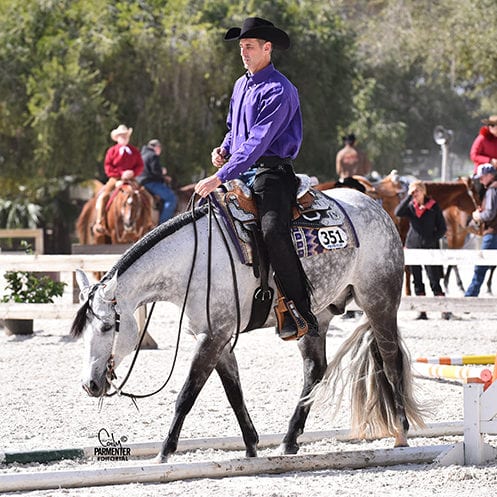Anyone who has shown a trail horse knows the complex nature of the class and how many variables have to come together for a winning ride. In a class where horse and rider are challenged to communicate at an advanced level with many diverse situations and obstacles, every flaw or breakdown in communication between horse and exhibitor is exposed.
All horses are different and present different challenges. In order to master the trail course, it is important to address each horse as an individual, play to their strengths, and accommodate their weaknesses.
GoHorseShow sat down with two top trainers and AQHA Professional Horsemen, Bruce Vickery and Ryan Cottingim, to discuss six types of horses you’ll see on a trail course and how to address each problem to help horses and their riders to take on the course confidently.
1. Speedy Gonzalez
 Your best equine friend forgets that he is on a trail course and instead, thinks he is in the Olympic Medal Finals racing against the world’s finest sprinters. He is on a mission and is going to get through this trail course in record time with or without your help. You may become frustrated that he rushes through the course (sometimes forgetting to breathe) and has bouts of anxiety when asked to stand still or work slow obstacles.
Your best equine friend forgets that he is on a trail course and instead, thinks he is in the Olympic Medal Finals racing against the world’s finest sprinters. He is on a mission and is going to get through this trail course in record time with or without your help. You may become frustrated that he rushes through the course (sometimes forgetting to breathe) and has bouts of anxiety when asked to stand still or work slow obstacles.
While this behavior can be frustrating for both horse and rider, both our experts agree that patience is key when addressing this type of horse.
“It is important that the rider is in a calm mindset so that the horse does not feed off of the rider’s anxiety,” says Vickery. By taking an ample amount of time standing still and settling both during and in between obstacles, these horses will learn to breathe, settle and trust the rider.
 Vickery recommends setting up obstacles in different ways to help this type of horse gain confidence. “I might space my walkovers further apart or widen my back throughs in a view to alleviate anxiety and help this kind of horse not to feel trapped. Never rush and make sure that you take the horse off the obstacle and work on other things if he gets overly anxious or speedy.”
Vickery recommends setting up obstacles in different ways to help this type of horse gain confidence. “I might space my walkovers further apart or widen my back throughs in a view to alleviate anxiety and help this kind of horse not to feel trapped. Never rush and make sure that you take the horse off the obstacle and work on other things if he gets overly anxious or speedy.”
Cottingim recommends breaking each obstacle into smaller maneuvers and making sure not to overwhelm the horse and feed his anxiety further. “Simplify each obstacle and often stop to let the horse settle. A whole series of maneuvers may overwhelm this type of horse, but taking things one step at a time will help him become more comfortable with the obstacle.”
Additionally, Cottingim advises the importance of making sure that these types of horses are not too fresh to focus on their job. “Make sure your horse isn’t wound up before you start working. Some horses might need to change leads, long trot, longe, or simply do something else to get them in the frame of mind to be calm and focused.”
2. The Autopilot
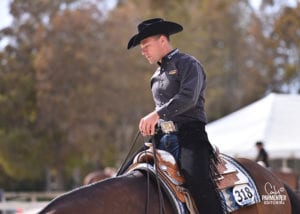 Although self-driving cars might be the wave of the future, it is unlikely that self-driving trail horses will ever be in style. If you have this type of horse, you know that he is always trying to think one step ahead of you and thinks he knows the pattern better than the course designer. He may lean, anticipate the path of travel, and execute transitions on his own, leaving the rider flustered and left behind.
Although self-driving cars might be the wave of the future, it is unlikely that self-driving trail horses will ever be in style. If you have this type of horse, you know that he is always trying to think one step ahead of you and thinks he knows the pattern better than the course designer. He may lean, anticipate the path of travel, and execute transitions on his own, leaving the rider flustered and left behind.
Both Vickery and Cottingim (pictured right) agree that a horse that helps his rider is a good thing, but he needs to allow the rider to guide him on the intended path.
 Cottingim tries to mix things up for these horses and makes sure that he isn’t enabling them to put a whole pattern together at once. “School one obstacle at a time and don’t always do all of the transitions where they are supposed to be.” By mixing things up, this type of horse will become less aware of the path of travel and allow the rider to play a more active role in guiding him around the course.
Cottingim tries to mix things up for these horses and makes sure that he isn’t enabling them to put a whole pattern together at once. “School one obstacle at a time and don’t always do all of the transitions where they are supposed to be.” By mixing things up, this type of horse will become less aware of the path of travel and allow the rider to play a more active role in guiding him around the course.
Vickery (pictured left) makes things a little bit harder on this type of horse to get their mind on things other than outsmarting their rider. “You should never allow a horse to take you anywhere. Each move should be a deliberate choice made by the rider.”
3. The Clunker
 Nothing is relaxing about hearing a chorus of clunking poles as you make your way through a trail course. Unfortunately, not every go can be clean and not every horse feels as strongly as their riders do about the importance of getting over each obstacle without hitting it. If you are the owner of a “clunker,” then you know that sometimes it can feel like a demolition derby when you are on course. Fear not, though, help is on the way.
Nothing is relaxing about hearing a chorus of clunking poles as you make your way through a trail course. Unfortunately, not every go can be clean and not every horse feels as strongly as their riders do about the importance of getting over each obstacle without hitting it. If you are the owner of a “clunker,” then you know that sometimes it can feel like a demolition derby when you are on course. Fear not, though, help is on the way.
Although both Vickery and Cottingim agree that horses that lack pole awareness are some of the hardest horses to train, they both know many horses who have learned to become great trail horses with useful homework.
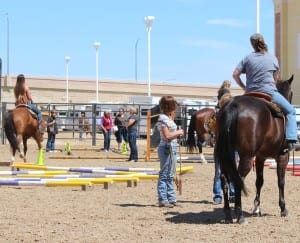 Vickery recommends setting up some gymnastics to remind these types of horses how to use their legs. “You can configure walk overs and trot overs with different spacing and elevations that you might not necessarily see on course to work on their footwork.”
Vickery recommends setting up some gymnastics to remind these types of horses how to use their legs. “You can configure walk overs and trot overs with different spacing and elevations that you might not necessarily see on course to work on their footwork.”
Bruce has found that many horses will learn to be careful by picking their way through different obstacles and learning where to place their feet. “By doing a lot of homework and asking this type of horse to work above his level, you will set him up to be successful once he is on the trail course and the obstacles are not as challenging.”
Cottingim advocates using callisthenic work to teach horses that lack pole awareness muscle memory. “Repetitive exercises and consistent work can teach horses to perform more consistently over the poles.” He also stresses the importance of rider awareness when it comes to this type of horse. “A rider being mindful their horse’s foot placement can help this type of horse to have a cleaner course. These horses will tell on you when you put them in the wrong spot, and it is the rider’s job to put them in the best position to have the best working advantage on each obstacle.”
4. The Hungry Hippo
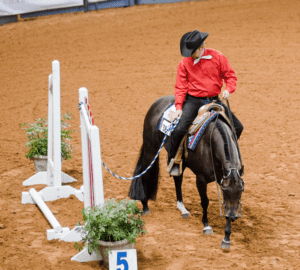 We’ve all seen it, that horse that is so hungry that he thinks the greenery, flowers, or rope gate on course are his next snack. Hey, sometimes hunger can make us do some crazy things. However, although we all understand the intense feelings that come along with being hungry, we know that there are certain situations when grabbing a snack on the go is not appropriate.
We’ve all seen it, that horse that is so hungry that he thinks the greenery, flowers, or rope gate on course are his next snack. Hey, sometimes hunger can make us do some crazy things. However, although we all understand the intense feelings that come along with being hungry, we know that there are certain situations when grabbing a snack on the go is not appropriate.
It goes without saying that making sure your horse is fed before you make your way to the trail course is a major step to having a successful go. However, it is also important that your horse knows the difference between trail time and snack time.
Vickery, who has admittedly shown a horse that carried a potted plant across the trail bridge, stresses that it is important that horses know that this behavior is never acceptable. “It is important to make sure that your horse is always paying attention to you and not the greenery or decorations on the course. To achieve that, make sure that your horse knows that it is never acceptable to show interest in things with his mouth when you are leading him or on his back.”
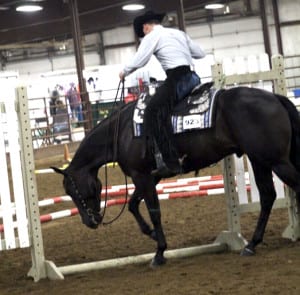 By firmly reprimanding this type of horse when they go to take a bite of something they are not supposed to, the behavior will be discouraged by the negative reaction from their handler. Vickery stresses that fixing this behavior takes immense consistency on the part of the exhibitor to effectively teach the horse what is expected of them.
By firmly reprimanding this type of horse when they go to take a bite of something they are not supposed to, the behavior will be discouraged by the negative reaction from their handler. Vickery stresses that fixing this behavior takes immense consistency on the part of the exhibitor to effectively teach the horse what is expected of them.
Cottingim believes that this type of behavior is attributed to the horse’s lack of attention to the rider. By practicing patience and having consistent cues, the horse will be more likely to pay attention to the rider and less attention to the tempting snacks on course. “Make sure that you use signals that can be used in the show arena when you are practicing. For example: ‘whoa’ always means all four feet on the ground and stand square in the bridle.”
5. The Non-Steering Steed
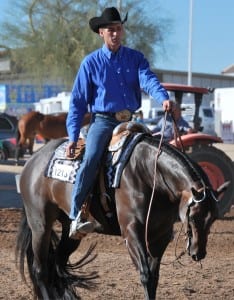 You have planned out your path of travel and are ready to take on the course, but your best-laid plans are foiled when your horse’s power steering goes out mid obstacle. If you have experienced moments like this on your horse, then you know that lack of steering can spiral into a multitude of problems on course.
You have planned out your path of travel and are ready to take on the course, but your best-laid plans are foiled when your horse’s power steering goes out mid obstacle. If you have experienced moments like this on your horse, then you know that lack of steering can spiral into a multitude of problems on course.
Both of our experts agree that steering is a training fundamental that must always be readdressed, and fine tuned no matter the age of the horse. “Keeping your horse light and guiding off your rein and leg are skills that must regularly be practiced both on and off the obstacles,” says Cottingim. He also notes that steering issues can lead to problems on the trail course that has nothing to do with the poles. “Horses that have issues with steering need to constantly be reminded to keep their bodies in position and guide willingly.” Freeing this type of horse up and spending time working on handiness both on and off the poles will resolve many of the issues on course.
Vickery stresses the importance of the rider using their feet and hands together when working on steering. “Make sure to be consistent with your cues both on and off the obstacles. Practice and repetition are essential when it comes to steering and body control.”
6. The Scaredy Cat
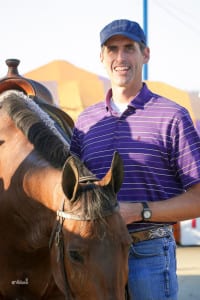 We all remember the cowardly lion from the Wizard of Oz. He wanted to be courageous, but alas, he was scared of his own shadow. As the story goes on, he faces many dangerous situations and eventually realizes that he is courageous after all. He is finally awarded a medal for his bravery.
We all remember the cowardly lion from the Wizard of Oz. He wanted to be courageous, but alas, he was scared of his own shadow. As the story goes on, he faces many dangerous situations and eventually realizes that he is courageous after all. He is finally awarded a medal for his bravery.
Horses who spook are similar to the cowardly lion in the sense that they are hyper aware of their surroundings and are worried that something might jump out and get them while on course. If you have one of these horses, have faith because both of our experts agree that they are not only fixable, they can ultimately turn into the most successful trail horses over time.
With this type of horse, Vickery recommends exposing them to as many different types of obstacles as possible and making sure to give them a stress-free experience. “Make sure you have flower boxes and decorations for them to see at home and let them stand by things and get comfortable and relaxed.”
Another key factor to succeeding with this type of horse is to make sure that they are not fresh when they are in a spooky environment because being fresh can make them even edgier.
 Vickery also notes the importance of getting this type of horse to pay attention to the rider’s cues. “Once the horse trusts the rider and understands his cues, he may look to the rider for consistency and reassurance when he is scared. A rider can help to make this type of horse confident and less likely to spook with comfortable and consistent cues.”
Vickery also notes the importance of getting this type of horse to pay attention to the rider’s cues. “Once the horse trusts the rider and understands his cues, he may look to the rider for consistency and reassurance when he is scared. A rider can help to make this type of horse confident and less likely to spook with comfortable and consistent cues.”
Cottingim advocates constant exposure for this kind of horse and urges riders to use their surroundings to their advantage. “If you are in the makeup pen and you see a flower box or something that might spook your horse, approach it from different angles and make sure that you reassure your horse and give him a good experience.”
Both of our experts agree that spooky horses often end up getting over their fears with ample time and positive experiences and are very careful and expressive trail horses if managed properly.
Best of luck and happy trails to you!
Photos © Cody Parmenter, Impulse Photography, Kaleena Katz Weakly
About the Author: A California native turned Texan, Erica Lang Greathouse took her first pony ride at a local fair at the age of four. That ride ignited her passion for horses, and there was no turning back. In her show career, she has earned a Congress Championship, multiple APHA World and Reserve World Championships, and a top ten finish at the AQHYA World Show. She graduated from the University of North Texas with a degree in Communication Studies and a minor in Psychology.


